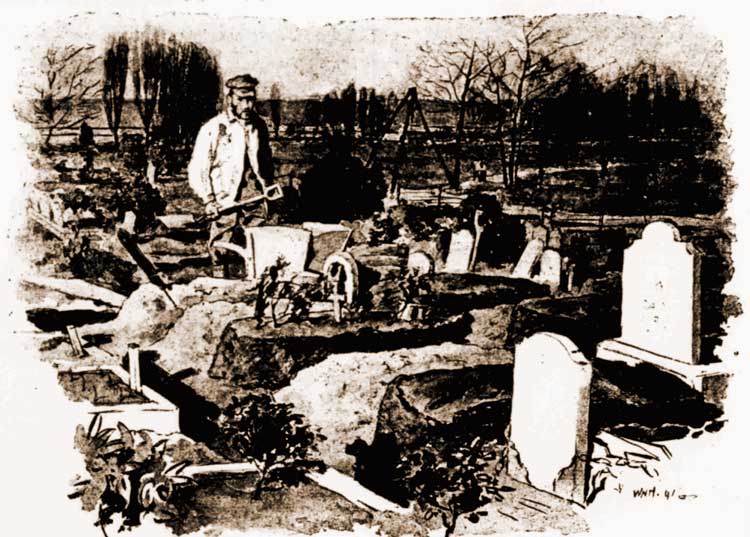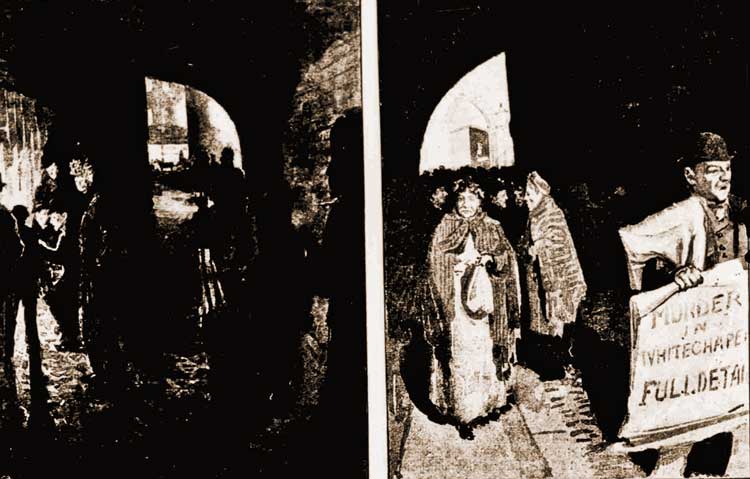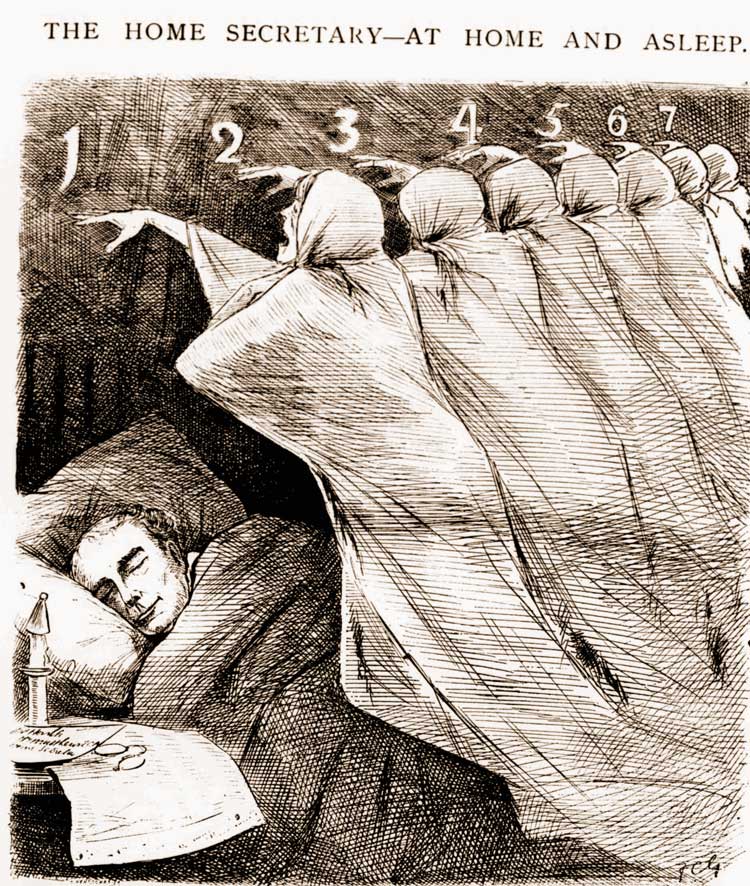I have recently been perusing copies of The Pall Mall Budget – the weekly digest of articles that had appeared in The Pall Mall Gazette – searching for information on the Whitechapel murders, as well as on Whitechapel in general.
The Budget contained more illustrations than the Gazette, and, as I perused its pages, I encountered quite a few images that I hadn’t seen before.
WHERE THE RIPPER’S VICTIMS ARE BURIED
The first appeared in the newspaper on March the 5th, 1891, and was part of its coverage on the murder of Frances Coles, which had taken place in Swallow Gardens in the early hours of the morning of Friday the 13th of February, 1891.
The sketch was captioned, “WHERE RIPPER’S VICTIMS LIE”, and it shows the area of the East London Cemetery where Elizabeth Stride, Martha Tabram, and the unknown woman referred to as the Pinchin Street torso had been laid to rest.
It also features a fresh grave, which I presume was a depiction of the grave of Frances Coles.
As far as I know, this is the only depiction of the grave of Frances Coles that we have.

THE MURDER SITE
The same edition also showed the site where the murder had occurred, Swallow Gardens, situated off Chamber Street, fairly close to the Tower of London.
In fact, it featured two images of the scene of the crime, one by day, and the other by night.

THE SCENE OF THE MURDER OF ALICE MCKENZIE
Going back to the edition of July the 18th, 1889, along with the coverage of the murder of Alice McKenzie, there was a depiction of the scene of her murder in Castle Alley, which clearly shows the wash house, the façade of which still stands in what is now known as Old Castle Street.

THE GRAVE OF MARY KELLY
Another intriguing image was featured in it edition of November the 22nd, 1888, and showed the mourners gathered around the grave of Mary Kelly.

COMMENTING ON SIR CHARLES WARREN
Like its sister paper The Pall Mall Gazette, The Pall Mall Budget was very political and took an anti police and anti government stance.
As far as the police were concerned, the paper directed its ire at the Metropolitan Police Commissioner, Sir Charles Warren, and several of the cartoons were brutal towards him.
When Warren resigned around the time of the murder of Mary Kelly, the Budget published a cartoon showing him being thrown from a horse, marked POLICE, over a wall marked, WHITECHAPEL, whilst behind him you can see the starting line marked as TRAFALGAR SQUARE, a reference to the Commissioner’s handling of the protests on Bloody Sunday, the previous year.

SIR HENRY MATTHEWS
The other person that the Budget aimed its barbs at was the Home Secretary, Sir Henry Matthews.
One cartoon in particular demonstrated the paper’s editorial policy towards Matthews, and it shows him sleeping soundly in his bed, whilst 7 shrouded figures, representing the Whitechapel Murders victims, hover over him.

A BIT OF A MYSTERY
This final image did, I must confess, confront me with a bit of a mystery, since it appeared in the edition of the 4th of October 1888, by which date their had only been six Whitechapel murders, whereas the image shows seven figures.
I can only think that the illustrator was counting a victim who appears to have been a figment of the collective press imagination by the name of Fairy Fay, who, it was being claimed at the time, had been murdered on Boxing Night in 1887.
